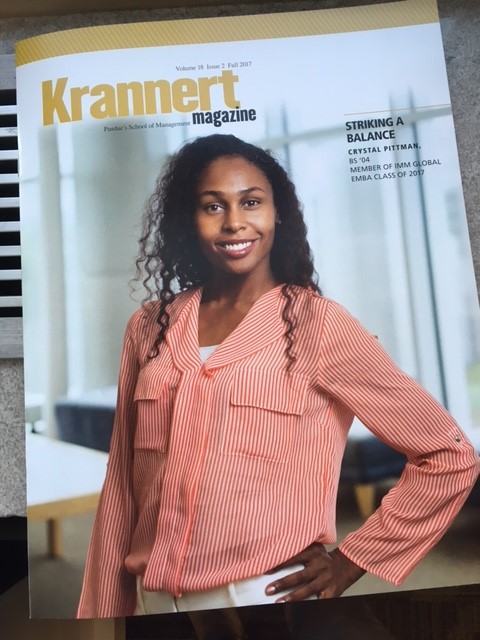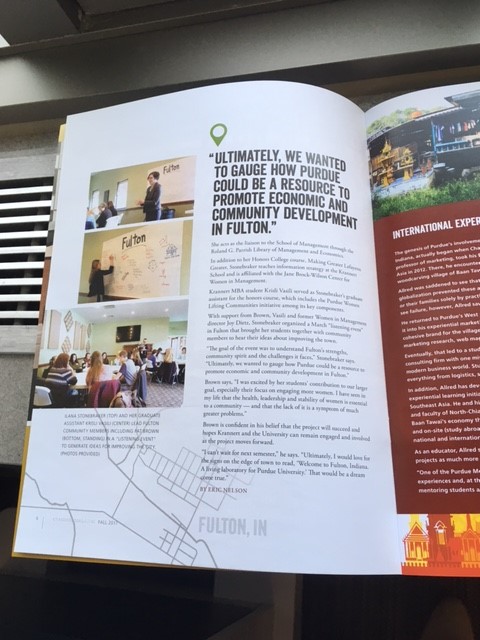I get very frustrated with assignment repositories. One reason why is that just putting an assignment up in a document repository really doesn’t tell you the whole story. Why did the instructor choose to do this assignment? Why do they think it works well? What types of students does that university have and are they similar to my students? It’s also very frustrating to me because as far as I can tell, the assignment repositories do not have good SEO and they don’t show up in Google searches. From time to time, I’d like to talk about an assignment that I use and why I use it.
I first thought of this assignment when I was in graduate school and the University of Michigan. While there, I worked at the business library at the reference desk and I had many opportunities to look up many different types of reference questions. One of the questions that I looked up was about recalls. There was a student who wanted to know what made recalls successful. After searching around, I found that recalls in the databases were more likely to be referred to as “reverse logistics”, both because that was a much more encompassing terms (it included things like recycling programs) but also because it was much more polite and didn’t bring to mind scandals.
I like to teach on purpose and one way that I exert effort in this direction is to try to make students understand how their decisions might affect other people. One way to make students think about how their decisions hold value is to confront them with ethical scenarios, and in these scenarios give them the opportunity to act ethically and in the best interest of the community. In this Group Challenge, the students are a crib manufacturer and their cribs have been found to be unsafe. Their goal is try to get the cribs off the market as quickly as possible. Their company was in the wrong, but now they have decided to do what’s right. It is in their business’ best interest to now be good logistics business people.
In the interest of acting most ethically, the student must consider how to get the information out. In this case they have the chance to help as many people as possible which will allow them to think differently about the role they might have. I don’t think that problems in business are always public versus business, but they are actually more nuance. You can find ways to do what’s best for the business while also doing what’s best for the community. Or maybe you don’t. But whatever you do, you want to make sure that you base your decisions on the information that you found, and back that up with solid reasoning and thinking.
In librarianship there is also great discussion about scholarly versus public sources. In my area of librarianship (business), there is a greater amount of discussion about scholarly versus trade sources. The good thing about recalls is that they are public events so there are often many examples of what happened. What companies are doing can be found in trade articles, which could be (depending on who you ask) newspapers like the Wall Street Journal, but also things like Fortune magazine or Grocery Review. If you were looking for trade articles on a recall you would search “recall”. You search “recall” because you were looking for specific company examples of when recalls were done. If you are looking for scholarly journal, you will most likely want to use the term “reverse logistics” because recalls are but one part of an overall structure of approaching the details of getting things that were on the market off the market. Scholarly articles in management are very much about models and processes.
Group Challenge : Operations
DUE: End of class today, to Blackboard. This is a group project that will be graded for overall accuracy, following directions and completion. Put the name of your group members present in the comment box when you submit to Blackboard. Problems submitting to Blackboard? Email it to your instructor.
This is a group assignment that will be graded on its merits. Points will be award for accuracy, ability to follow directions, for the quality of the recommendation using the information, for grammar and spelling, and for clarity.
You work for a successful furniture manufacturer located in the Midwest. You have recently found out that 14,000 of the baby cribs you manufacture were deemed unsafe by the Consumer Product Safety Commission. There is a risk of an entrapment hazard, meaning babies can fall becoming entrapped in the crib bars, or suffer cuts. You need to issue a voluntary recall so that you can give your customers a free (safer) replacement mattress support with newer brackets. In order to avoid large publicity issues, you need to recall these baby cribs in a short amount of time.
You are on the team to research potential solutions for implementing the recall in the short amount of time. Your team has decided to research two forms of evidence to help decide how to recall the cribs in the fastest manner. First you are going to research two companies (IKEA and Bexco) who have done recent recalls. Second, you will located scholarly approaches to reverse logistics, recall management or product recalls for best practices. For this case, you are most interested in doing the recall most efficiently and effectively.
Suggested way of breaking the project up:
8:30-9: One group member works on finding the scholarly journal article. Three student work on locating the three recent events and writing up the paragraph summary. As the Question 1 students finish they check each other’s work. You may also want to put an additional person on finding/reading the scholarly article.
9:05-9:10: Bring all information together and discuss what you think the company should do.
9:10-9:20: Write up two paragraph response. Submit.
Questions to answer as a team:
1) Use either ABInform Collection or Business Source Premier Complete to locate three recent articles (since 2008) describing recall events involving IKEA, Bexco. Summarize them briefly (1-2 sentences each) and then describe how all of them would affect your recall (1 paragraph).
2) Use either ABInform Collection or Business Source Premier Complete to locate one scholarly (peer reviewed) article which might be a good model for you to consider when implementing the recall.
It does not need to be about baby cribs or furniture but does need to be written in the last 12 years. This article could answer any (but does not need to answer all) of the following questions:
- How do companies maximize the efficiency of their supply chains when implementing reverse logistics? (more questions on back)
- What are the most effective reverse logistics systems?
- How do you write the most effective product recall message to get people to participate?
- How does someone plan and implement a successful product recall?
- What are factors affecting implementation of reverse logistics?
- What frameworks do scholars use when they study reverse logistics?
Summarize your article briefly and how they might help you in your decision (1 paragraph)
3) Based on your answers above, what do you think your company should do? Were any of the two companies using a model you would follow? Did your scholarly article point to any specific things your group should consider when implementing the recall? Support your decision with information from your articles and summaries (2 paragraphs)
4) In all, you will have located four articles. Please give the citations for the articles.


 It’s January 1, which I think is a day in which a lot of people try to think more intentionally about things in their lives as they start the new calendar year, so I thought I’d use this day to talk a little bit about secret learning objectives. People like to write about learning objectives in teaching. They like to talk about learning objectives very hierarchically or very sequentially. When you have done this and this and this, then we know that you can do this other thing. All very logical and straightforward.
It’s January 1, which I think is a day in which a lot of people try to think more intentionally about things in their lives as they start the new calendar year, so I thought I’d use this day to talk a little bit about secret learning objectives. People like to write about learning objectives in teaching. They like to talk about learning objectives very hierarchically or very sequentially. When you have done this and this and this, then we know that you can do this other thing. All very logical and straightforward.
